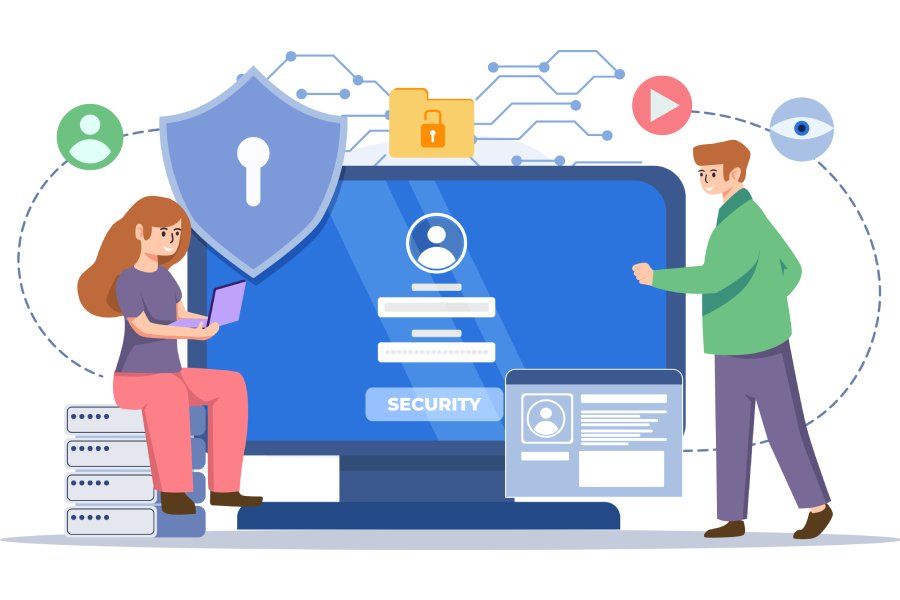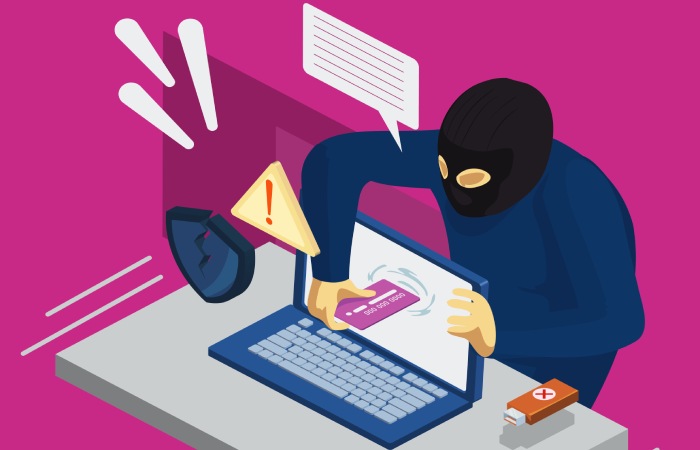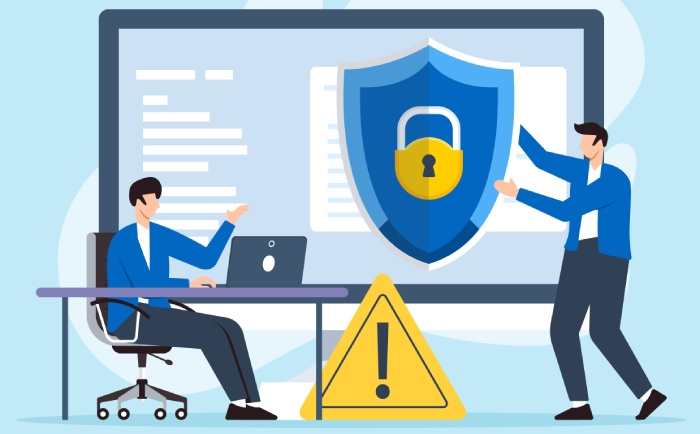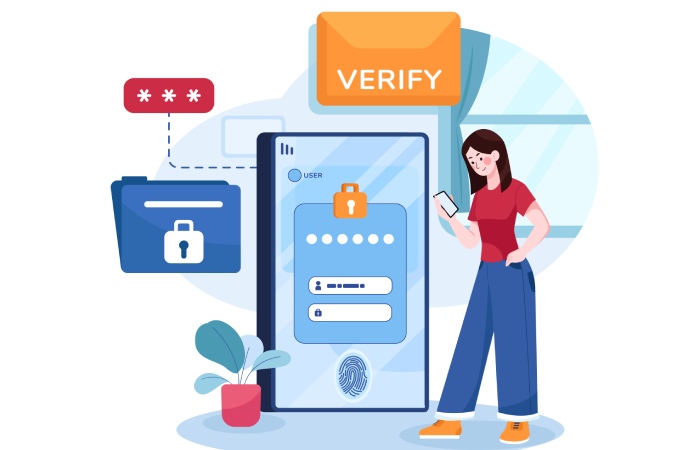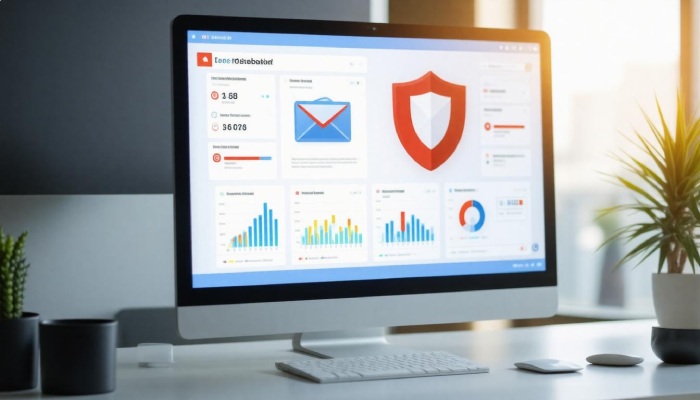When you check your email, how often do you stop to think about the risks lurking behind seemingly innocent messages? Spear phishing attacks—targeted attempts designed to trick individuals into revealing sensitive information—are becoming more common and far more sophisticated. As cybercriminals zero in on their targets with personalized tactics, it’s essential for everyone, especially employees, to recognize these threats before they strike.
Understanding the signs of spear phishing and knowing how to respond can not only protect your data but also shield your organization from devastating consequences. In this article, we’ll explore effective strategies and techniques for preventing spear phishing attacks, equipping you with the knowledge needed to stay safe in an increasingly complex digital world.
To effectively prevent spear phishing attacks, organizations should implement comprehensive user awareness training that educates employees on recognizing suspicious emails and the importance of verifying sender identities. Additionally, employing technical solutions such as advanced spam filters, regular software updates, and multi-factor authentication can significantly enhance protection against these targeted cyber threats.
Identifying Spear Phishing Attacks
Unlike broader phishing attempts that cast a wide net, spear phishing is decidedly targeted, making it all the more deceptive and harder to detect. To effectively identify these threats, focus on the subtle nuances that set them apart from benign communications. If you receive an email referencing your name, position, or other personal information in a context that feels slightly off, that’s your first red flag. Attackers often spend considerable time researching their targets to craft messages that seem authentic and urgent.
Common Tactics
- Spoofed Addresses: One of the most prevalent techniques involves creating fake email addresses that closely resemble legitimate ones. A slight variation in spelling can easily deceive someone who isn’t paying close attention; for example, an email from “johndoe@company.com” might appear as “johndoe@compani.com.” Always cross-check the sender’s address for discrepancies.
- Urgent Requests: These emails often employ emotional triggers by demanding immediate action. If you see language like “immediate payment required” or “urgent update needed,” step back and scrutinize the email. Genuine requests from a supervisor or colleague generally provide context and allow ample response time.
- Link Manipulation: Phishing emails may include links that look legitimate but redirect users to harmful websites. Hover over any hyperlinks before clicking to verify the URL appears trustworthy. If it directs you somewhere unexpected, do not proceed without further investigation.
- Attachment Inclusion: Unexpected attachments can be laced with malware designed to infiltrate your system. If a colleague sends you something unanticipated, even if presented as important documentation, confirm its authenticity through a direct conversation instead of email.
Consider a notable example from early 2024 when a major enterprise received emails that appeared to come directly from their CEO. The emails contained instructions for employees to download an urgent financial report attached. However, unbeknownst to the recipients, this attachment housed malware capable of compromising sensitive data across their network. Situations like this underline precisely why identifying these tactics is crucial.
Being aware of common tactics is just one part of building a robust defense against spear phishing attacks; recognizing these signs can enhance your vigilance and help protect both you and your organization from potential threats. Moving forward, understanding how to distinguish genuine communications from harmful ones will prove invaluable in safeguarding your sensitive information.
Recognizing Suspicious Emails
The digital world is rife with deception, and as attackers grow more sophisticated, distinguishing legitimate emails from harmful ones becomes crucial. When you open your inbox, it’s essential to evaluate the content and context of each email critically. Each message might have hidden intentions that can be detrimental if overlooked. By maintaining a vigilant attitude, you enhance your chances of protecting sensitive information from attacks.
Key Indicators
A recent study by Cybersecurity Ventures highlights just how pivotal these indicators are: 76% of successful spear phishing attacks could have been thwarted if recipients had simply spotted specific red flags. This statistic underscores a vital lesson—while it may seem daunting, becoming vigilant can dramatically lower your risk of falling victim to these cunning schemes.
So what should you look for? First and foremost, pay attention to grammatical errors; often, these mistakes signal that an email might originate from a source you wouldn’t typically expect credibility from. Along with notices in grammar, be wary of unexpected attachments. Legitimate organizations rarely send unsolicited files without prior discussion.
A personal anecdote underlines this point well: John Davis, an IT administrator, shared an experience where an email appeared to come from a trusted vendor but contained awkward phrasing and inaccurate grammar. Trusting his instinct, he contacted the vendor directly, and it turned out the email was part of a spear-phishing attempt. Continuing to educate oneself about red flags like these can save you and your organization time and resources while securing confidential data.
Another area you should scrutinize is the sender’s display name compared to the actual email address. Cyber attackers often employ visually similar addresses to mislead recipients—for instance, they might use “support@yourtrustedvendor.com” instead of “support@trustedvendor.com.” One character difference can spell disaster.
Engaging your critical thinking skills when reading emails isn’t just advisable; it’s essential in today’s technology-driven world. Clues are often subtle but unmistakable when viewed through a discerning lens. When uncertain about an email’s authenticity, don’t hesitate to validate the sender through direct communication channels rather than engaging with information contained within the suspicious email itself.
With an understanding of how to recognize suspicious emails firmly grasped, it’s time to explore methods that will significantly strengthen the security practices we adopt for our personal safety.
Strengthening Personal Security
One major step towards safeguarding your data is focusing on effective password management. Using complex and unique passwords for every account is a fundamental practice in cybersecurity. However, creating and remembering different passwords can be challenging, which is where a password manager comes into play. This tool not only generates strong passwords but also securely stores them for easy access. As noted by Statista in 2023, a troubling 60% of people reuse passwords across multiple sites, dramatically increasing their risk of being compromised. By using a password manager, you eliminate the need to remember numerous different strings of characters while bolstering your defense against potential breaches.
While solid passwords form a crucial foundation, they shouldn’t stand alone without additional layers of security.
Multi-Factor Authentication (MFA)
Enabling Multi-Factor Authentication (MFA) is a must to secure your website or software, as it adds an essential barrier to keep attackers at bay. With MFA activated, users are required to provide additional verification methods—such as an SMS code, an authenticator app, or even biometric identification—beyond just their passwords. This means that even if an attacker somehow acquires your password through various tactics like spear phishing, their efforts would be futile unless they also have access to the second form of identity verification. Google reported in 2024 that using MFA reduces the risk of account compromise by an astounding 99.9%. That’s not merely significant; it’s transformative for your digital security.
Another critical aspect of strengthening personal security lies in raising awareness about suspicious communications. Although we’ve covered tips for recognizing possible spear phishing emails previously, integrating this awareness into everyday actions creates a more vigilant mindset. For instance, anyone in your circle should remain skeptical about unsolicited emails requesting sensitive information, no matter how legitimate they might appear.
Protecting yourself online requires continuous education and adaptation to evolving threats.
The cybersecurity landscape constantly shifts, necessitating not just one-time awareness training but ongoing education about new risks and tactics employed by hackers. Regularly updating software is also vital; out-of-date programs can harbor vulnerabilities that hackers exploit to gain access. By ensuring your operating systems and applications are updated regularly, you act as a strong line of defense against potential attacks linked to spear phishing attempts.
Building upon these preventive measures will further enhance your ability to recognize threats and respond effectively.
Cyber Security Training and Awareness
Employees are often the first line of defense against cyber threats, making comprehensive training programs essential for any organization. It’s all about preparing them to recognize and respond to potential threats. Imagine walking into an office where everyone feels confident navigating their emails. That confidence stems from knowing exactly what deceptive messages look like and how to handle them. It starts with understanding the difference between a legitimate email and a disguised attack.
Training Programs
Conducting regular workshops that focus not only on identifying phishing attempts but also on educating employees about the broader scope of cyber threats can have a transformative impact. Incorporating interactive training simulations, which mimic real-world scenarios, prepares the staff to react appropriately when they encounter suspicious messages. According to a study from the SANS Institute in 2023, companies benefiting from ongoing security training saw a staggering 45% decrease in successful phishing attacks. This measurable improvement highlights the truth: informed employees are empowered employees.
“Simulated phishing exercises are particularly effective,” says Sarah Morgan, a cybersecurity trainer. “Employees who ‘fail’ these tests often remember the experience and become more vigilant.” This method creates a memorable learning experience that sticks with individuals, making them more ready for real threats.
Beyond simply recognizing fraudulent emails, employees should be trained in several key areas: understanding common tactics used by attackers, practicing safe online behavior, and knowing whom to contact when they suspect an attack. It’s crucial to teach them about protecting sensitive information, as personal data plays a considerable role in both spear phishing and broader phishing schemes. The more knowledge they gain, the less vulnerable they become.
Statistics show that organizations implementing these proactive measures see tangible benefits. For instance, companies that conduct frequent phishing simulations reduce successful attacks by approximately 50%. This means just one training session could significantly bolster a company’s defenses.
With education anchored through regular training sessions, every employee becomes a crucial pillar of your cybersecurity strategy—this sets the stage for integrating even more robust protective strategies across the organization.
Implementing Preventive Measures
One of the primary lines of defense in preventing spear phishing attacks is to utilize email filtering solutions. Today’s threats can often slip past basic filters, which is why deploying advanced email filters and anti-phishing tools has become essential.
Solutions such as Mimecast or Proofpoint use advanced algorithms to automatically detect, quarantine, and even delete suspicious emails before they reach an employee’s inbox. Since these malicious emails often attempt to impersonate trusted contacts or institutions, having a reliable filter in place can significantly reduce the chances of a successful attack.
Imagine you receive an email that appears to come from your bank but contains subtle grammatical errors and an unusual attachment. An effective email filtering solution identifies these red flags, placing the email in quarantine or redirecting it altogether. This preemptive measure not only saves time for IT by reducing the volume of potential threats but also helps maintain employee confidence in using email communication.
However, prevention alone isn’t sufficient; regular updates and patching form a crucial component of any organization’s cyber hygiene.
Keeping everything up-to-date—including software, applications, and security patches—is vital. Outdated software can act like an open door for attackers, enabling them to exploit vulnerabilities unnoticed. When software providers release updates, they typically include security enhancements that fix known exploits used in phishing attacks. By neglecting to install these updates, organizations run the risk of leaving themselves exposed and vulnerable.
As a rule of thumb, organizations should establish a routine update schedule—at least monthly—to address all systems and software effectively. Regularly reviewing devices and ensuring they are running on the latest version creates an environment less inviting for cyber criminals.
Yet even with these preventive measures established, creating a robust incident response plan is equally critical.
This duality between prevention and rapid response highlights that while reducing risks is essential, organizations must also be prepared for what happens if an attack occurs. Implementing thorough training for employees regarding how to identify suspicious emails—and backing that up with simulations—can hone their awareness and detection skills further.
After all, when it comes down to it, humans remain one of the most unpredictable elements in any security equation. Through strategic investments in technology combined with informed human processes, organizations can build a fortress against spear phishing attempts that is resilient and responsive.
Moving forward, it’s essential to focus on identifying signs that may indicate fraudulent activities lurking just under the surface.
Detecting Fraudulent Activities
The ability to detect fraudulent activities, especially in the realm of spear phishing, is crucial for safeguarding sensitive information. Organizations today face increasingly sophisticated attacks that can easily blend in with legitimate communications. A deep understanding of what constitutes suspicious behavior becomes essential.
For instance, if an employee notices multiple failed login attempts on their account or uncharacteristic changes to their settings, it could indicate an attempt to breach their credentials.
To enhance detection capabilities, establishing robust monitoring protocols is essential. Automated alerts for unusual activities should be implemented, and employees should be encouraged to maintain a healthy skepticism towards unexpected emails or messages. For example, if something seems off about an email asking for sensitive information— even if it appears to come from someone within the organization—it’s better to verify before acting. This culture of vigilance will empower team members to act as the first line of defense.
Data supports this proactive approach: IBM’s 2024 report indicated that organizations with active monitoring and quick reporting protocols detected and mitigated attacks 50% faster than those lacking such measures. This sharp response time can significantly reduce the impact of any phishing attack.
Furthermore, adding a layer of technological support can also bolster detection efforts. Implementing advanced machine learning systems allows organizations to analyze patterns that human eyes might miss. These systems can learn from ongoing interactions and flag suspicious behaviors autonomously, thus providing a comprehensive safety net.
Key Tips for Enhancing Detection of Fraudulent Activities
- Regularly update detection policies to align with the latest phishing trends.
- Offer constant education sessions regarding new phishing techniques targeting your specific industry.
- Encourage employees to use multi-factor authentication (MFA) whenever possible; this alone can thwart many phishing attempts even when credentials are compromised.
By fostering a culture where suspicious activities are monitored and reported promptly, organizations not only protect themselves from immediate threats but also build resilience against future attacks. The spirit of vigilance should permeate every level of the organization, allowing for gradual improvement of awareness and proactive responses to phishing threats.
As we continue to explore these essential strategies, integrating solutions like DuoCircle along with email authentication protocols such as DKIM, DMARC, and SPF into daily operations will empower employees to proactively defend against threats that compromise data security.
Building a Robust Security Framework
A multi-layered approach to cybersecurity is not just ideal; it’s crucial. This means creating a framework that combines various strategies and tools to combat potential threats effectively.
The first step in this journey is policy development, where organizations should establish comprehensive guidelines on how data is handled and accessed. Clarity in these policies ensures that every employee understands their role in maintaining data security and the consequences of not adhering to these standards.
Consider this: when employees know what is expected of them concerning data security, they are less likely to fall prey to deceptive tactics like spear phishing. This clear communication forms the foundation of a culture focused on security awareness.
So, one might wonder about the technical aspects that reinforce these policies, capturing the need for solid defenses.
Framework Components
Technical defenses are next in line, acting as the barricade against cyber intrusions. Implementing firewalls helps monitor incoming and outgoing traffic, making unauthorized access more difficult. Additionally, intrusion detection systems serve as proactive monitors that alert security teams of unusual activities within the network. When these technical defenses are combined with secure network architecture, organizations can bolster their resilience against attacks.
For instance, imagine your network as a fortress. Firewalls act like the moat surrounding it, while intrusion detection might be likened to sentinels stationed on the walls, ready to sound the alarm at the first sign of trouble.
Now that we’ve established preventative measures through policy and technology, let’s shift our focus to readiness for any incidents that might occur.
An incident response plan is essential in ensuring an organization can quickly respond to breaches should they occur. Developing and regularly updating this plan allows teams to minimize damage by knowing exactly how to react in a crisis. It’s not merely about having paperwork tucked away; it needs to be practiced and adapted based on evolving threats.
As noted earlier, a financial firm successfully thwarted significant data loss in 2025 because they had a well-practiced incident response plan in place. They could quickly isolate and neutralize the threat rather than scramble around attempting to figure out actions to take.
Regular training and simulations can keep employees sharp on their roles during a breach scenario. This prepares them for real-life threats, fostering a sense of shared responsibility across all levels of the organization.
By integrating these elements—policies, technical defenses, and incident response—organizations cultivate both a proactive and reactive environment that can withstand the complexities of modern cyber threats like spear phishing. It’s an ongoing commitment that pays dividends by protecting sensitive information and maintaining trust with clients and stakeholders alike.
By embracing these strategies, organizations can navigate the murky waters of cybersecurity confidently and protect their vital data assets in an increasingly challenging digital landscape.
What are the most effective methods for training employees to recognize spear phishing attempts?
The most effective methods for training employees to recognize spear phishing attempts include interactive simulations, regular workshops featuring real-life examples, and ongoing assessments. According to recent studies, organizations that implemented simulated phishing exercises saw a 70% reduction in successful phishing attacks within six months. Engaging employees through gamified learning experiences increases retention and awareness, making them more vigilant against potential threats.
How can organizations create a culture of security awareness among employees to prevent spear phishing?
Organizations can foster a culture of security awareness by implementing regular training sessions that emphasize the importance of recognizing spear phishing attempts, coupled with simulated phishing exercises to reinforce learning. According to a 2022 study, companies that conducted ongoing security awareness training had up to a 70% reduction in successful phishing attacks. Moreover, promoting open communication about cybersecurity challenges and encouraging employees to report suspicious activities can further enhance vigilance and collective responsibility towards protecting sensitive data.
How can technology be utilized to detect and block spear phishing emails before they reach the inbox?
Technology plays a crucial role in detecting and blocking spear phishing emails before they reach users’ inboxes through advanced spam filters, machine learning algorithms, and artificial intelligence (AI) systems that analyze email patterns and sender behaviors. These tools can identify anomalies in communication, flagging suspicious messages based on heuristics and historical data; for example, studies show that AI-driven solutions can improve detection rates by up to 99%, significantly reducing the risk of successful attacks and safeguarding sensitive information.
What role do social engineering tactics play in spear phishing attacks?
Social engineering tactics are crucial in spear phishing attacks as they exploit human psychology to manipulate targeted individuals into divulging sensitive information or granting access to systems. By crafting personalized messages that resonate with the victim’s interests or concerns, attackers increase the likelihood of success; studies show that 93% of successful breaches involve social engineering. This highlights the necessity of awareness and training in cybersecurity strategies to recognize and defend against such deceptive approaches.
What should businesses do in the event of a successful spear phishing attack on their systems?
In the event of a successful spear phishing attack, businesses should immediately isolate affected systems to prevent further data compromise, initiate incident response protocols, and conduct a thorough investigation to assess the breach’s extent. It’s crucial to notify all impacted stakeholders and regulatory bodies as per compliance requirements. According to cybersecurity reports, organizations that respond swiftly to breaches can reduce potential losses by up to 50%, emphasizing the importance of a well-prepared response strategy. Additionally, reviewing and reinforcing employee training on recognizing phishing attempts can help prevent future incidents.
